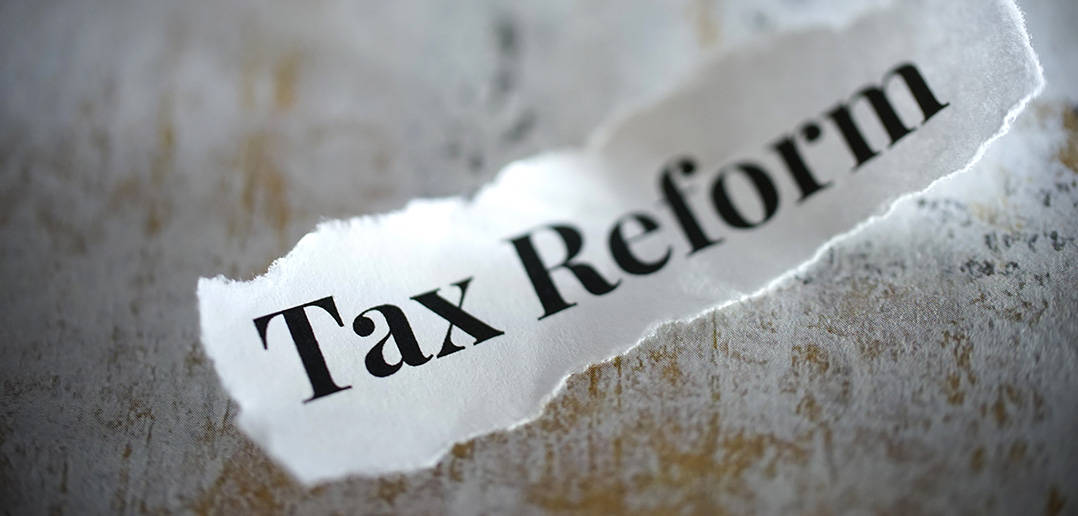
We know that you work hard for your money and often a tax refund may be the biggest check you get all year, so we’re here to let you know how the new tax reform legislation may affect your tax refund next year.
The new tax law is the largest piece of tax reform legislation in 30 years and was signed into law on December 22, 2017. For most people, these tax changes impact tax year 2018 (the taxes you file in 2019) and not tax returns you’re filing now. Overall, the changes associated with the new tax law may lower taxes for individuals and small businesses.
Some of the highlights for taxpayers include:
• Lower individual tax rates
• Increased standard deduction
• Increased child tax credit
• Elimination of dependent and personal exemptions
• Elimination of some itemized deductions
• $10,000 cap on the deduction for state income taxes, sales, and local taxes, and
property taxes combined
• 20% deduction for “pass-through” entities (sole proprietorship, partnership, S corp.)
Increased expensing limits for capital assets
So just what will these changes mean for your 2018 tax refund? Here is a break down based on your individual tax situation.
A FAMILY WITH KIDS
Although there was an elimination of the dependent exemption deduction beginning for tax year 2018, families with kids may see a bigger tax refund next year since the child tax credit doubled and went from $1,000 to $2,000. In addition, the amount that is refundable grows from $1,100 to $1,400. The law also adds a new, non-refundable credit of $500 for dependents other than children. Finally, it raises the income threshold at which these benefits phase out from $110,000 for a married couple to $400,000. Tax credits are a direct reduction from the taxes you owe so they mean more than a deduction that reduces taxable income.
CLAIMS THE STANDARD DEDUCTION
If you claim the standard deduction you may see less tax liability in 2018 since the new tax law nearly doubles the standard deduction amount. Single taxpayers will see their standard deductions jump from $6,350 for 2017 taxes to $12,000 for 2018 taxes (the ones you file in 2019). Married couples filing jointly will see an increase from $12,700 to $24,000. These increases mean that fewer people will have to itemize. Today, roughly 30% of taxpayers itemize. Under the new law, this percentage is expected to decrease.
CLAIMS ITEMIZED DEDUCTIONS
If you claim itemized deductions you may see fewer tax deductions that lower your tax deduction especially if you live in a state with high property taxes since the new law limits the amount of state and local property, income, and sales taxes that can be deducted to $10,000. In the past, these taxes have generally been fully tax deductible.
The law also caps the amount of mortgage indebtedness on new home purchases on which interest can be deducted at $750,000 down from $1,000,000 in current law.
If you itemize you will also see the elimination of some miscellaneous itemized deductions like unreimbursed employee expenses under the new law.
SELF-EMPLOYED, S CORPS, AND PARTNERSHIPS
If you are self-employed or have an S-Corp or partnership you may see lower tax liability which may increase your refund since the new law includes a 20% deduction for incomes from certain type of “pass-through” entities and almost doubles the amount small businesses can expense when they purchase business equipment from the 2017 Section 179 amount of $510,000 to $1,000,000.
WHAT DO YOU NEED TO DO?
Because of the changes to the 2018 tax laws such as changes to itemized deductions, increased child tax credit to $2,000, the new dependent credit, and the eliminations of dependent and personal exemptions, you should file a new Form W-4 with your employer in response to the new tax law, if your personal situations changed, or if you started a new job.
The IRS is also working on revising Form W-4 to reflect additional changes in the new law, so employees can update their withholding in response to the new tax law changes. TurboTax has you covered with TurboTax Tax Caster so you can estimate your tax liability for 2018. Stay tuned for TurboTax updated W-4 calculator so you can calculate your personal allowances for your withholding from your paycheck.
Self-employed and small business owners may also wish to make adjustments to estimated taxes they pay. QuickBooks Self-Employed will help you easily figure out your estimated taxes.
TurboTax Has You Covered
TurboTax has you covered and will be up to date with the latest tax laws. If you have more questions while doing your taxes, you can connect live via one-way video to a TurboTax Live CPA or Enrolled Agent to get your tax questions answered. TurboTax Live tax experts can even review, sign, and file your return.

